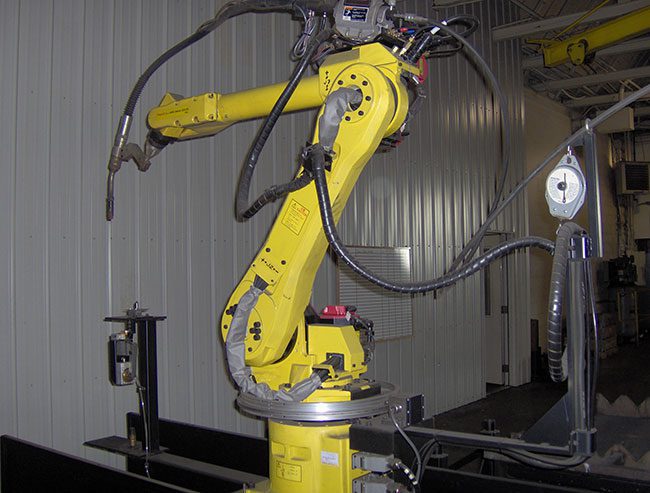Five Advantages of Robotic Welding

The demand for robotic welding and manufacturing is on the rise. In 2016 the demand for robotics in the metal industry rose by 39 percent. The increase in reliance on industrial robotics is a growing trend as companies compete to remain competitive globally. As business dynamics change, businesses must outdo bidders from all over the world. Cost, quality, efficiency and turnover time influence decision-making in business. This leads manufacturers and welders to look for solutions and alternatives that improve efficiencies.
Welding robotic systems offer a number of advantages; production quality improves allowing you to meet global standards while reducing operational costs. Additional benefits include:
Consistency
One of the factors that affect consistency in manual welding is distortion of weld by heat. Robotic welders offer precision during welding. This minimizes the number of weld passes needed to complete a task, which reduces heating from the surrounding metal that can distort the final product.
Additionally, robotic and laser welding ensures that you can repeat a task and achieve the same consistency each time, unlike in manual welding where consistency and repeatability requires a high skill set and extreme concentration. The consistency you achieve is useful, especially in mass production as you can guarantee your clients’ uniformity. Robotic welding allows you to perform repetitive tasks without the risk of human error.
Efficiency and Quality
Robotic welding systems help you speed up your output. They also perform tasks with high accuracy, eliminating the need to repeat tasks, which wastes time. Unlike manual welding, which relies on human laborers, robotic systems do not stop for breaks, vacations or sick days. Once you master the settings and programming needed for each weld, you can run the systems around the clock, allowing you to increase productivity and meet client deadlines with ease. Robotic systems also perform precisely with minimal splattering reducing the time spent cleaning up after a job. Overall, they improve customer satisfaction as you can deliver on tasks faster, improving your reputation, and gradually, your bottom line.
Conservation of Raw Materials
Laborers in manual welding often make mistakes that result in wastage of material and power. When using robotic welding, you regulate everything including the power, allowing you to conserve energy. Robotic systems run consistently over a long time, reducing the frequency of equipment start-ups, which also saves power.
Safety and Labor Saving
Welding exposes workers to risks such as toxic gases, fumes, electric shocks and weld flash burns. Robotic welding systems allow supervision from a distance reducing exposure to these risks. You also have fewer employees working around the welding area, minimizing the possibility of accidents.
The only significant cost you incur when operating robotic welding systems is the initial cost of purchasing the equipment, thereafter, you only need to spend on routine maintenance and repair. Additionally, robotic systems do not require insurance schemes, accident compensation, insurance policies and overtime pay among others unlike manual welding. You also save on expenses such as finding the right welders and training them to suit your business.
Cost Saving
Robotic systems improve efficiency, which saves you time, resources, and reduces operational costs. Through robotics, you increase consistency, productivity and deliver better quality. Other costs saving opportunities include reduced compensation for workers and energy saving costs. Cost saving cuts the cost of production, subsequently reducing the overall cost of the product, giving you a competitive advantage when sending quotations to clients.
Robotic welding systems offer several benefits that gradually help you improve your profit margins and customer satisfaction. With robots, you have better access to small and hard to reach areas. You can choose from a wide range of designs that offers a slender robotic arm that gives you better access to such areas.
The biggest challenge after acquiring a robotic welding system is getting individuals with the skills to program and operate the equipment. Many manufacturers offer in-depth training before purchase with additional informational tools such as videos and detailed manuals. Alternatively, look for a welder with previous experience working with robotic systems to help you program it and train your workforce.
If you have a fabrication or welding need, contact Swanton Welding. Our innovative technology and expert welders will provide you with a great product every time.

